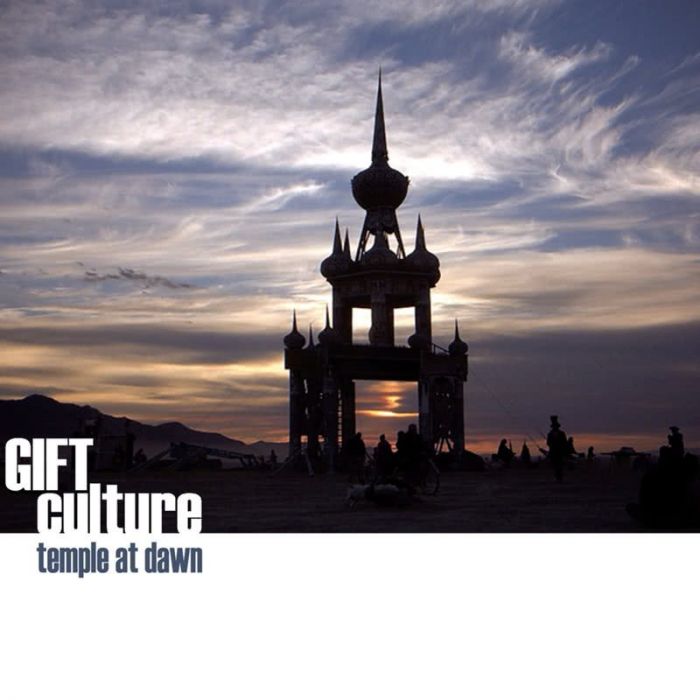Temple At Dawn by Gift Culture (Review)

If there’s one great thing about electronic music (there’s more than just one thing, but let’s stay focused for the sake of this review), it’s given us a whole new vernacular when it comes to describing and writing about music (which is great for those of us who run music websites). No longer are we restricted to writing about melody and rhythm, about a song’s harmonies or lyrics. Now we can delve into the wonderful world of DSP technology, granular and spectral synthesis, FFT/IFFT based spectral morphing and interpolation, and of course, algorithms. Gotta have those algorithms.
I realize that all of this might sound pretty stuffy and academic, and heck, I don’t even know what some of those terms really mean (I’ll have to ask my audio software-programming roommate). After all, music is ultimately about emotion, right? Not computer programming, circuitry, and most certainly not algorithms. But check out what Michael Hale, who records under the moniker GIFT Culture, has to say: “In this day and age, it is possible to sculpt light and sound as if they were clay. Throw a midi-digitizer, sensors, and a video-sampler into the mix, and suddenly, you have the power to create fully immersive audio/visual multimedia environments.”
Sounding any cooler yet? Well, the problem with Temple At Dawn is that, even with all of the elaborate technical parlance attached, it just doesn’t sound as innovative or mind-blowing as it was perhaps intended to be. I mean, when I hear something about “granular and spectral synthesis” being involved, consider my curiosity piqued. But essentially, what we have with Temple At Dawn is fairly engaging, though certainly not groundbreaking electronica with some trance and ethnic flourishes. Sort of like the stuff you’d expect from the Moonshine label.
Okay, not that bad.
Now I say that somewhat cheekily, because in all seriousness, GIFT Culture isn’t anywhere near as bland as some of the techno/electronica CDs that come my way. Hale’s music does contain a number of elements that certainly perked up my ears — the opening track’s crunchy, “Idioteque”-esque rhythms; the Oriental atmospherics on “Abhassara”; the chiming, bell-like synths that resound throughout “Shangri-La”; and “Gamelon“ ‘s hypnotic ethnic rhythms a la Banco De Gaia. But they’re often swallowed up by other beats and atmospherics that, while not banal, don’t exactly reach out and grab you.
I wonder if part of the problem goes back to Hale’s comments about “fully immersive audio/visual multimedia environments.” I wonder if I’m only getting a fraction of the experience with just the CD. I can certainly see how, in the proper environment, and with the proper visuals, this could become a more compelling experience. But as just a standalone CD spinning in my player, it’s just not as captivating as it could be.